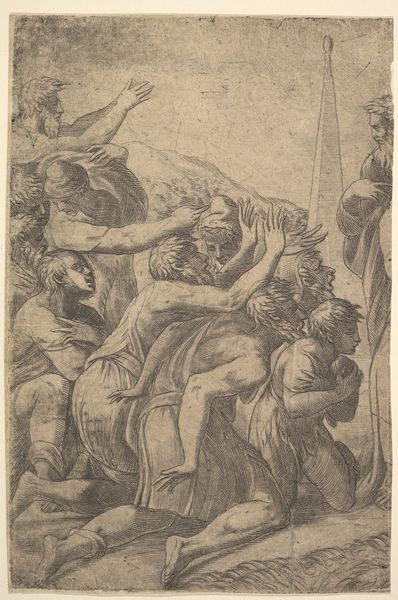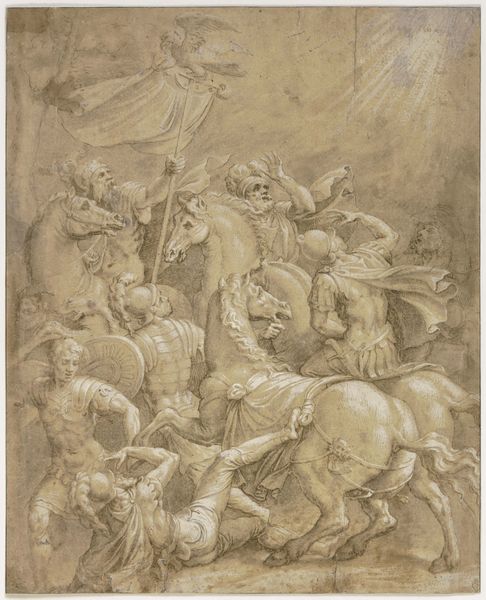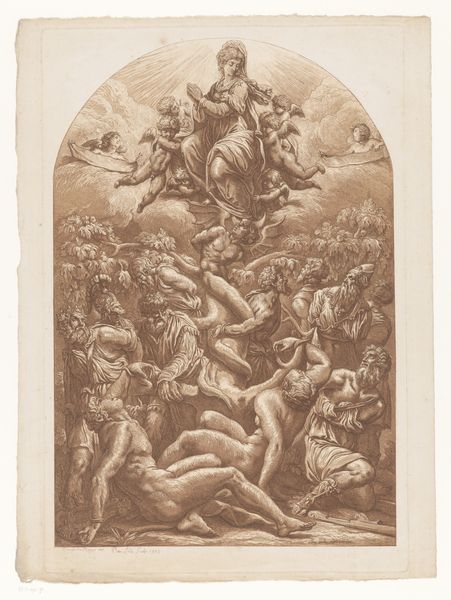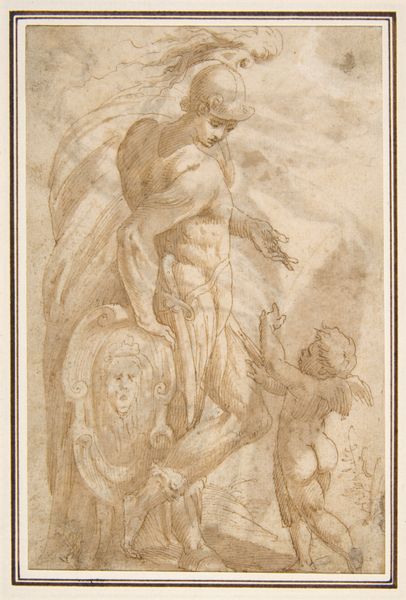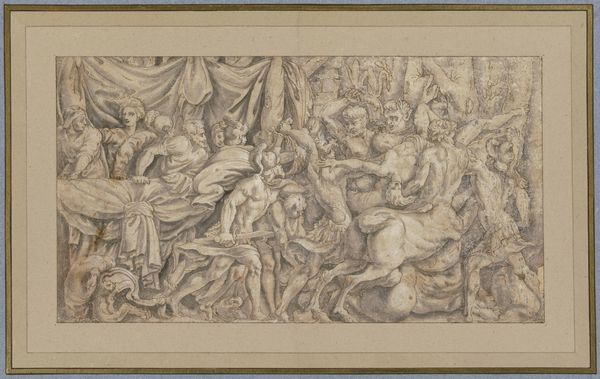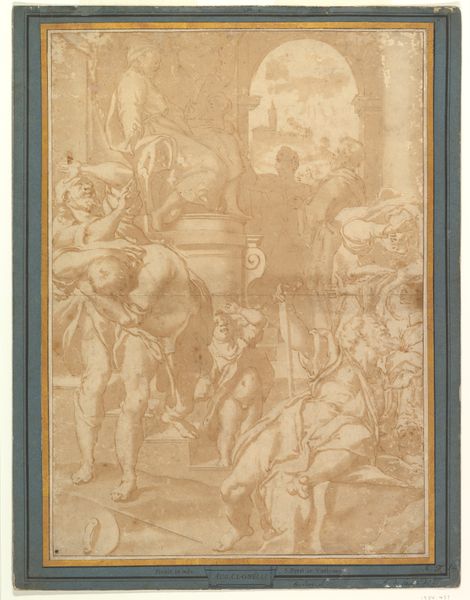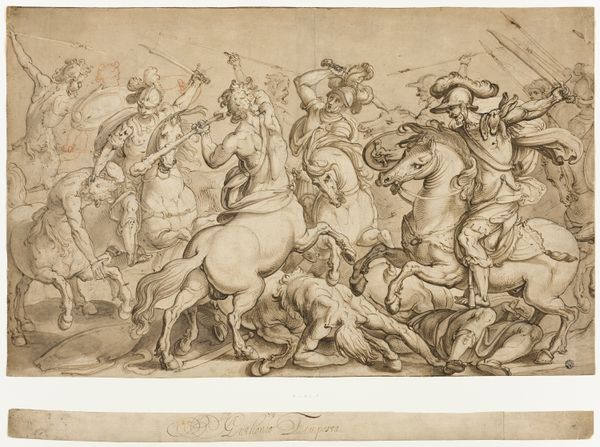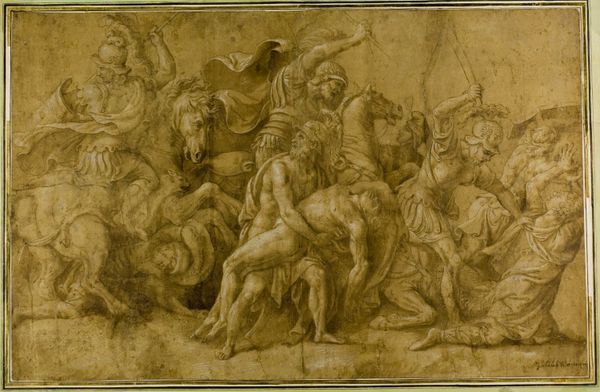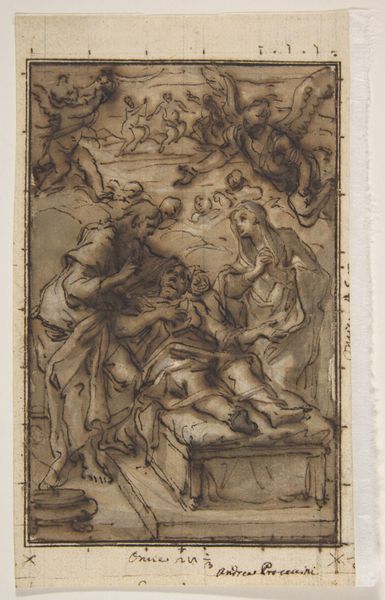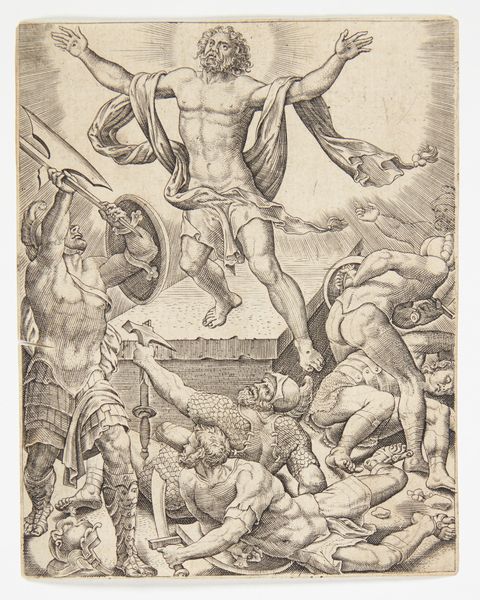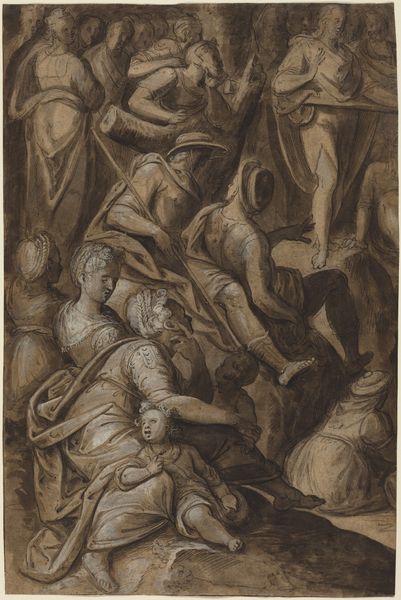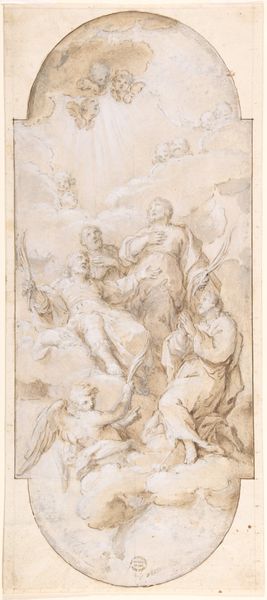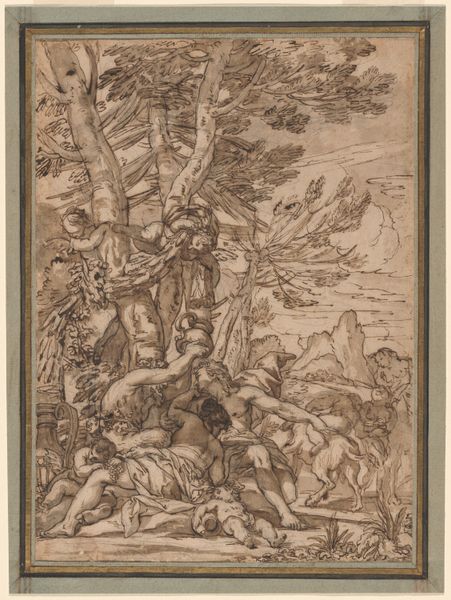
drawing, pencil
#
drawing
#
narrative-art
#
figuration
#
pencil drawing
#
pencil
#
portrait drawing
#
history-painting
#
academic-art
Dimensions: height 385 mm, width 317 mm
Copyright: Rijks Museum: Open Domain
Editor: Here we have Andrea Scacciati's "Siege of a City," created sometime between 1735 and 1771, rendered in pencil. The overwhelming sensation I get is one of dramatic violence. So much dynamic movement captured in a static image. What sort of narrative is being told here? Curator: Notice how Scacciati uses a very linear and academic style, harkening back to classical battles and mythology. Think about the weight battles hold in cultural memory, and how, through consistent visual language—the rearing horses, the clash of swords, the fallen bodies—these become symbols, imbued with meanings about heroism, sacrifice, and even futility, that stretch across time. What emotional impact do these symbols have on you? Editor: It’s interesting you mention sacrifice. While there's apparent glory, seeing the fallen evokes a sense of tragedy and the heavy cost of victory. The symbols feel almost...formulaic, like a script. Curator: Precisely! This formula allows Scacciati to tap into a pre-existing cultural understanding. Consider the raised spears, for example. They are not just weapons; they're phallic symbols representing power and dominance. Do you think that knowledge changes how we perceive the artwork? Editor: Definitely. Knowing those hidden layers transforms it from just a battle scene into a study of power dynamics and the cyclical nature of conflict. It makes it much richer. Curator: It does, doesn’t it? The repetition of such imagery throughout history suggests a human need to grapple with these primal aspects of existence, turning conflicts into enduring stories with common visual features. Editor: I see that now. Thanks; I’ll certainly never look at another battle scene quite the same way again. Curator: My pleasure! This exercise underscores how much cultural memory is embedded within artistic representations. It is why some symbols survive and evolve across generations.
Comments
No comments
Be the first to comment and join the conversation on the ultimate creative platform.
